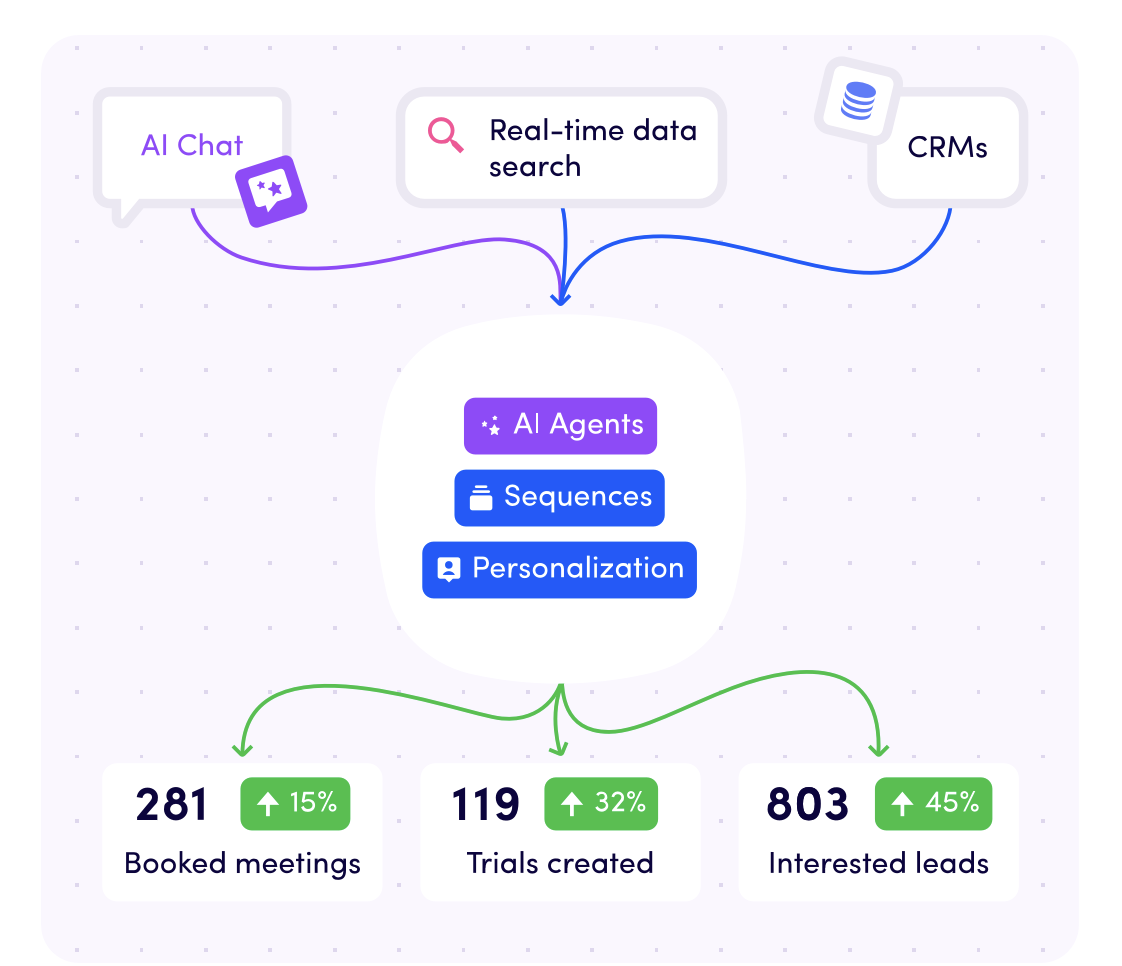It's time for an agile approach! Stemming from the principles of agile software development, agile marketing enables teams to quickly iterate on ideas, prioritise tasks based on value, and collaborate efficiently.
By breaking down projects into smaller, manageable tasks called 'sprints,' teams can rapidly experiment, gather feedback, and adjust strategies in real time.
We'll guide you to excel on agile principles by answering the most frequently asked questions.
Looking for something in particular? Check it out here:
1. What is agile marketing?
2. Why is agile marketing important?
3. What skills do you require to start working in an agile environment?
4. What does agile work bring to the marketing table?
5. How does agile marketing strategy differ from traditional marketing approaches?
6. What role does continuous improvement play in agile marketing?
7. Why is cross-functional collaboration important in agile marketing?
8. How do stand-up meetings contribute to agile marketing practices?
9. What is meant by having an Agile Mindset?
10. What occurs if other departments crucial to the end-to-end delivery process aren't adopting Agile practices?
11. How can Agile methodologies help marketing teams adapt to rapidly changing market conditions and consumer preferences?
12. Want to learn more about marketing?

(Image source: Growth Tribe)
1. What is agile marketing?
Agile marketing thrives on collaboration and cross-functional teamwork, fostering innovation and creativity.
By constantly reassessing and adjusting tactics based on real-time data, it ensures that marketing efforts remain relevant and impactful in a fast-paced digital landscape. Agile marketing empowers teams to embrace experimentation and learn from both successes and failures, driving continuous improvement and growth.
2. Why is agile marketing important?
Agile marketing is crucial in today's rapidly evolving digital landscape because it enables marketers to stay responsive to shifting consumer preferences, market trends, and competitive dynamics.
Its iterative approach fosters adaptability, allowing teams to quickly adjust strategies based on real-time feedback and data insights. By prioritising customer-centricity and speed, agile marketing helps businesses maintain a competitive edge, seize opportunities, and drive meaningful engagement with their target audience. Ultimately, it empowers marketers to deliver more impactful and relevant campaigns that resonate with consumers in an ever-changing marketplace.
3. What skills do you require to start working in an agile environment?
Working in an agile environment requires specific skills and mindsets.
Individuals must be open to experimentation and view failure as part of the learning process. They need to embrace collaboration, adaptability, and continuous improvement. Proficiency in using data to drive strategies is essential, as agile teams rely on data-driven decision-making. Additionally, having traits of servant leadership, prioritising development team needs and fostering a culture of trust, is beneficial. These skills collectively empower individuals to thrive in the fast-paced and collaborative nature of agile environments, driving impactful results amidst uncertainty.
4. What does agile work bring to the marketing table?
Agile work increases productivity and measurability in marketing efforts, enhancing the efficiency and effectiveness of project team efforts.
Fostering a culture of intense experimentation, enables marketers to run numerous iterations, rapidly identifying what resonates with their audience. Communication and collaboration thrive in agile environments, as cross-functional teams work together seamlessly, breaking down silos and driving innovation. Moreover, agile methodologies place a stronger emphasis on customer needs, enabling marketers to respond rapidly to evolving desires and preferences, thereby fostering deeper connections and loyalty.
5. How does agile marketing strategy differ from traditional marketing approaches?
Agile marketing strategy diverges from traditional approaches by prioritising iterative campaigns, continuous improvement, and customer-focused collaboration.
Unlike traditional methods, which rely on long-term planning and big-bang campaigns, agile marketing favours shorter cycles of execution and evaluation. This approach allows for quick adaptation based on real-time feedback and data insights, fostering innovation and responsiveness to changing market dynamics and consumer preferences.
6. What role does continuous improvement play in agile marketing?
Continuous improvement serves as the cornerstone of agile marketing, driving ongoing refinement of strategies and tactics.
By consistently analysing data and gathering feedback, agile marketers can identify areas for enhancement and adapt their approaches accordingly. This iterative process ensures that marketing efforts remain effective and aligned with evolving goals and customer needs. Ultimately, continuous improvement enables agile marketers to stay ahead of the curve, continuously optimising their campaigns for maximum impact and relevance.
7. Why is cross-functional collaboration important in agile marketing?
Cross-functional collaboration is integral to agile marketing for several reasons.
Firstly, it allows for the integration of diverse skill sets and perspectives from various departments, enriching the team's collective expertise and problem-solving abilities. By bringing together individuals with different backgrounds and expertise, cross-functional teams can approach challenges from multiple angles, fostering creativity and innovation. Moreover, collaboration breaks down silos between departments, enabling seamless communication and knowledge sharing. This synergy accelerates decision-making and the execution of marketing initiatives, allowing teams to deliver value more quickly and effectively. Overall, cross-functional collaboration enhances agility and adaptability, empowering marketers to respond swiftly to changing market dynamics and customer needs.
8. How do stand-up meetings contribute to agile marketing practices?
Stand-up meetings serve as a cornerstone of agile marketing practices by fostering communication, alignment, and transparency within teams.
These brief and focused gatherings provide an opportunity for team members to share updates, discuss challenges, and align on priorities. By promoting regular communication and information sharing, daily meetings ensure that everyone is on the same page and working towards common goals. Additionally, they facilitate quick issue resolution and collective accountability, as any obstacles or roadblocks can be addressed promptly. Overall, stand-up meetings enhance productivity and collaboration within agile marketing teams, enabling them to adapt quickly to changing priorities and deliver results more efficiently.
9. What is meant by having an Agile Mindset?
Having an agile mindset in marketing involves embracing four key shifts.
Firstly, prioritising outcomes over outputs, moving away from a purely production-oriented mentality and assuming responsibility for commercial results. Secondly, fostering a culture of continuous improvement, characterised by data-driven decision-making and a commitment to testing and learning. Thirdly, a customer-centric approach, entailing developing comprehensive customer personas, journey maps, and user stories to effectively address customer needs. Finally, it advocates for decentralised decision-making, where leaders establish and clarify goals, while teams are empowered to self-organise and make tactical decisions autonomously. This agile mindset enables marketing teams to navigate the complexities of today's dynamic business landscape with agility and effectiveness.
10. What occurs if other departments crucial to the end-to-end delivery process aren't adopting Agile practices?
Ideally, all stakeholders involved in the delivery journey would be integrated into Agile teams.
If resistance persists in other areas, consider proposing a small-scale trial to demonstrate the benefits. If this isn't feasible, prioritise consistent communication and effective visualisation methods. Develop a shared accessible board and send regular email updates to ensure transparency regarding ongoing activities and their implications for all involved parties.
11. How can Agile methodologies help marketing teams adapt to rapidly changing market conditions and consumer preferences?
Agile methodologies provide marketing teams with a flexible framework to respond quickly and effectively to changing market conditions and consumer preferences.
By breaking down projects into smaller, manageable tasks and embracing iterative cycles of planning, execution, and sprint review and evaluation, at regular intervals, agile marketing enables teams to adapt their strategies in real time based on feedback and data insights. This agility allows marketers to stay ahead of trends, seize emerging opportunities, have a measure of progress, and pivot away from ineffective tactics swiftly. Overall, agile methodologies empower marketing teams to navigate the dynamic landscape of today's digital marketplace with resilience and innovation.
Want to learn more about marketing?
If you feel like elevating your strategy, mastering data-driven tactics, and increasing revenue and referrals, you are in the right place!
Growth Tribe offers a course where you can become an expert in the tools, techniques and strategies that the world’s leading businesses use to grow, and drive impactful growth in your organisation.
This is the structure of the course:
6 modules | 62 lessons | 35 videos | 6 tests | 6 exercises
- Module 1 - The fundamentals of digital marketing
- Module 2 - Data-driven decision-making in growth marketing
- Module 3 - Design your growth experiments
- Module 4 - Top-funnel growth marketing: awareness & acquisition
- Module 5 - Mid-funnel growth marketing: activation & retention
- Module 6 - Bottom-funnel growth marketing: revenue, CLTV, and virality
Whether you're an aspiring marketer or a seasoned professional, this course is tailored to meet your needs and take your growth marketing expertise to the next level.
👉 Check out our course here



















